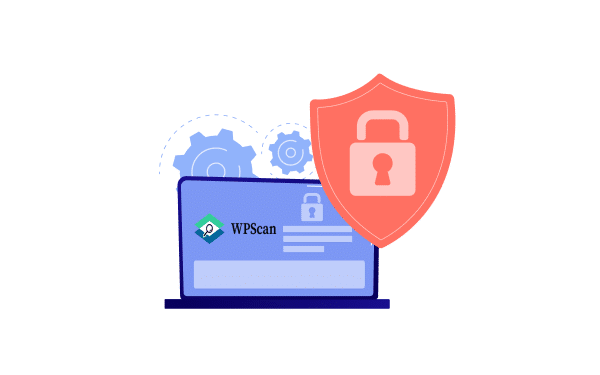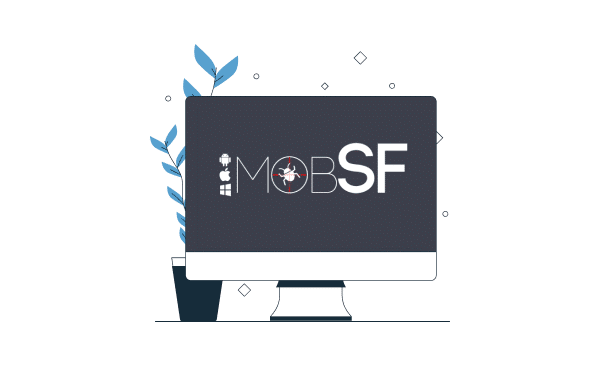
18 Mar 11 Popular Penetration Testing Tools for Web, Mobile and Network
Have you been searching for a penetration testing tool that would best serve your security testing requirements for web applications and networks? Do you want to compare and analyse different penetration testing tools and decide on which one(s) would be best suited for your enterprise? Or are you simply curious to know which tools are out there and what their features are?
If yes, then this blog has you covered.
Whether the pen test is conducted for regulatory compliance, security assessment, or strengthening the IT environment’s defense against Cyber Security threats, a combination of the right tools is crucial. If the penetration tester doesn’t have access to the right tools, chances are vulnerabilities, some critical, may not be detected and hence, reported giving a false sense of security.
Popular Penetration Testing Tools:
Here are 11 penetration testing tools that are very apt at detecting vulnerabilities and accurately simulating cyber attacks. Let’s have a look at their features and advantages, and platforms they are compatible with.
1. Burp Suite Pro

Burp Suite Pro one of the most popular, powerful, and advanced penetration testing tools that can help pentesters to fix and exploit vulnerabilities and identify their target’s more subtle blind spots. It is a “suite” of various advanced tools and, is best suited for penetration testing of web applications.
There are two versions – the community edition offers necessary features such as intercepting browser traffic, managing recon data, and out-of-band capabilities necessary for manual pen testing, while the pro version offers several advanced features such as scanning web application for vulnerabilities.
Burp Suite Pro has several features that are incredibly helpful for pentesters, such as the few listed below.
- It has a powerful proxy component that performs man-in-the-middle attacks to intercept the transfer of data and lets the user modify the HTTP(S) communication passing through the browser.
- Burp Suite helps test out-of-band (OOB) vulnerabilities (those that cannot be detected in a traditional HTTP request-response) during manual testing.
- The tool finds hidden target functionalities through an automatic discovery function.
- The tool offers faster brute-forcing and fuzzing capabilities which enable pentesters to deploy the custom sequence of HTTP requests that contain payload sets, which drastically reduces the time spent on different tasks.
- Burpsuite Pro offers a feature to easily construct a cross-site request forgery (CSRF) Proof of Concept (POC) attack for a given request.
- The tool also facilitates deeper manual testing as it can provide a view for reflected or stored inputs.
- The app store provides access to hundreds of community-generated plugins which are written and tested by Burp users.
Usage – Best for professionals and expert penetration testers who want to leverage a powerful automated and advanced manual testing tool to uncover critical application-level flaws.
Parent company – PortSwigger
Platforms – The supported platforms include macOS, Linux, and Windows.
2. SQLmap

SQLmap is an open source but a very powerful penetration testing tool that expert pen testers use to identify and exploit SQL Injection vulnerabilities impacting different databases. It is an incredible pen-testing tool that comes with a robust detection engine that can retrieve precious data through a single command.
Below are some of the popular and beneficial features of SQLmap:
- Using a dictionary-based attack, SQLmap helps with automatic recognition of password hash formats and support for cracking them.
- It efficiently searches for specific database names, tables, or columns across the entire database, which is useful in identifying tables that contain application credentials containing string like name and pass.
- SQLmap supports to establish an out-of-band TCP connection between the database server and the attacker machine providing user with interactive command prompt or a meterpreter session.
- The tool supports downloading and uploading any file from/to the databases it is compatible with.
Usage – It is best detecting and exploiting SQL Injection flaws and taking over database servers.
Parent company – Open-source tool available in GNU (General Public License)
Platforms – MySQL, Oracle, PostgreSQL, Microsoft SQL Server, SQLite, Firebird, SAP MaxDB.
Read Also: The Dark Web: What You Need to Know?
3. Aircrack-ng

Aircrack-ng is a network security pen testing tool that comes with a series of utilities to assess Wi-Fi networks for possible vulnerabilities. It provides critical operations of monitoring, testing, attacking, and cracking.
This tool allows the tester to capture data packets and export the data to text files for further processing by other third-party tools. It has the capability to carry out replay attacks, de-authentication attacks, and creates fake access points via packet injection. The tool also helps to check Wi-Fi cards and driver capabilities, and can be used to crack WEP and WPA WPA (1 and 2).
Other features include:
- The tool is best known for its capability to crack WEP and WPA-PSK without any authenticated client, where it employs a statistical method for cracking WEP and brute force attack to crack WPA-PSK.
- Aircrack-ng is a complete suite that includes a detector, packet sniffer, analytical tools, and WEP and WPA/WPA2-PSK crackers.
- Aircrack-ng suite contains tools such as airodump-ng, aireplay-ng, aircrack-ng, and airdecap-ng tools
- Airodump-ng is used to capture raw 802.11 packets.
- Airplay-ng is used to injects frames into wireless traffic which is then used by Aircrack-ng to crack the WEP and WPA-PSK keys once enough data packets have been captured.
- Airdecap-ng is used to decrypt captured files and can also be used to strip wireless headers.
Usage – It is a great suite of tools for penetration testers for hacking WI-FI networks. It is a command line tool and allows customisation.
Parent company – Open-source tool available in GNU (General Public License)
Platforms – Supported platforms include Linux, OS X Solaris, and Windows.
4. Wireshark

Wireshark is a must-have network protocol analyzer. It is widely used to capture live network traffic for network troubleshooting including latency issues, packet drops, and malicious activity on the network. It allows the testers to intercept and analyze data passed through the network and converts it into a human-readable format.
Some crucial features of Wireshark:
- Wireshark has powerful features that offers deep inspection of numerous protocols
- It comes with a standard three-pane packet browser and powerful display filters.
- Wireshark allows the data to be browsed through GUI or via TTY-mode TShark utility.
- It can read and write different file formats such as tcpdump (libpcap), Pcap NG, Catapult DCT2000, Cisco Secure IDS iplog, Microsoft Network Monitor, Network General Sniffer® (compressed and uncompressed) and more.
- The tool offers decryption support for different protocols including IPsec, ISAKMP, Kerberos, SNMPv3, SSL/TLS, WEP, and WPA/WPA2.
- The tools also allow inspection of VOIP traffic.
Usage – Best suited for Administrators for network troubleshooting and pentesters for analysing sensitive network data.
Parent company – Open-source tool available in GNU (General Public License)
Platforms – MacOS, Linux, Solaris, and Windows are a few supported platforms.
Read Also: Web Application Security Threats and Measures to Protect Them
5. Nmap

Nmap is one of the best and pentesters favourite open-source penetration testing tools that help to identify open ports and vulnerabilities in network. It also helps to identify which devices are running on the network and discovering hosts that are live.
The other features that the tool offers are:
- Enumerating open ports using port-scanning capabilities and version detection engine used for determining application name and version number on the services running on identified ports.
- NMAP contains over 2900 OS fingerprints which are useful in determining the operating systems of the underlying hosts.
- NMAP is basically a command-line utility, however, it also offers a GUI version called Zenmap GUI
- The Nmap scripting engine comes with over 170 NSE scripts and 20 libraries such as firewall-bypass, super micro-ipmi-conf, oracle-brute-stealth, and ssl-heartbleed.
- It offers better IPv6 support that makes way for more comprehensive network scanning in CIDR-style address ranges, Idle Scan, parallel reverse-DNS and more NSE script coverage.
- NMAP offers some amazing, advanced scanning techniques such as bypassing firewall or WAF that can help pentesters to bypass security devices implemented on the network perimeter.
Usage – Considered as the best tool by pen testers to identify network-level vulnerabilities.
Parent company – Open-source tool available in GNU (General Public License)
Platforms – The platforms that support the tool include Linux, Microsoft Windows, FreeBSD, OpenBSD, Solaris, HP-UX, NetBSD, Sun OS, and Amiga.
6. Metasploit

Metasploit is a penetration testing framework popularly used by both cyber attackers and ethical hackers. The Metasploit Project has two versions – the open-source sub-project Metasploit Framework and licensed version Metasploit Pro.
Metasploit Framework’s best offering is exploit code and payloads that can be developed and executed against a remote target machine. It provides a command line interface to work on, but testers can also purchase Metasploit Pro for advanced features and GUI-based operations.
Here are a few crucial features of Metasploit:
- Metasploit includes more than 1600 exploits that are organised over 25 platforms.
- The tool has around 500 payloads that include the following:
- Command shell payloads to run scripts against a host.
- Dynamic payloads to generate unique payloads to evade antivirus software.
- Meterpreter payloads to take control of device monitors, sessions, upload, and download files.
- Static payloads for port forwarding and enabling communication between the networks.
- Metasploit offer post-exploitation modules which can be used for deep penetration testing. These modules allow pentesters to collect more information about the exploited system such as hashdumps or service enumerators.
Usage – Metasploit is best used where multiple applications or systems are to be tested.
Parent company – Rapid7
Platforms – Metasploit is pre-installed in Kali Linux OS. It is also supported on Windows and MacOS.
7. Hashcat

Hashcat is a popular open-source password cracking tool used by both hacker and ethical hacker communities. Hashcat guesses a password, hashes it, and then compares the resulting hash to the one it’s trying to crack. If the hashes match, we know the password.
The password representation is primarily associated with hash keys such as WHIRLPOOL, RipeMD, NTMLv1, NTLMv2 MD5, SHA, and more. It can turn readable data into confusing code, which makes it hard for others to decrypt the data.
Other features of Hashcat:
- It is fast, efficient, and multifaceted.
- Hashcat enables the pen tester to crack multiple hashes at the same time and the number of threads can be configured and executed based on the lowest priority.
- It supports automatic performance tuning along with keyspace ordering Markov-chains.
- The tool comes with a built-in benchmarking system and integrated thermal watchdog.
- It allows to implement 300+ hashcats.
- Supports hex-charset and hex-salt.
- It supports distributed cracking networks and over 200 different hash formats.
Usage – It is best suited for system recovery specialists and pentesting to crack encrypted passwords.
Parent company – Open-source tool available in MIT License
Platforms – Linux, OS X, and Windows are some of the supported networks.
Read Also: How to Plan Cyber Security Budget Effectively?
8. WPScan

WPScan is an open-source WordPress security scanner that helps scan known vulnerabilities in WordPress core, plugins, and themes. It keeps an up-to-date database of WordPress platform vulnerabilities. WPScan is built using Ruby application and to scan the target for vulnerabilities, one can execute a simple command such as wpscan – url http://example.com.
Here are some of the features of WPScan:
- WordPress enumeration scan identifies the accurate version of WordPress core, plugins, and themes. It can also enumerate users active on the WordPress site.
- Identifying and detecting publicly available wp-config.php backup files and other database exports.
- WPScan can also help detect and crack weak passwords, which is achieved by passing them through the WPScan password dictionary or via brute-forcing.
- WPScan also enumerates version information of themes and plugins running on a WordPress site and provides information on vulnerabilities associated with the identified version.
- Other features include exposed error logs, media file enumeration, vulnerable Timthumb files, upload directory listing, full path disclosure, and many more.
Usage – The quickest way to run WPScan is to install its plugin on your wordpress website or by using docker image.
Parent company – Open-source tool, available on GitHub repository.
Platforms – WPScan is supported on ArchLinux, Ubuntu, Fedora, and Debian.
9. Nessus

Nessus is a powerful and widely popular network vulnerability scanner. It is the best tool for vulnerability scanning due to its massive repository of vulnerability signatures. On running a Nessus scan on a target machine, services running on that machine are identified and associated vulnerabilities are detected, and the tool also provides additional information for exploiting and remediating them.
Using Nessus scanner improves the security posture and ensures better compliance in virtual and cloud environments. If an organization requires speed and accuracy, Nessus is worth its license. However, Nessus Essentials allows you to scan your environment upto 16 IP addresses per scanner free of charge.
Here are some of the interesting features of Nessus that may compel you to try it for your organisation:
- Nessus is known to support more technologies as compared to other vulnerability assessment tools; this makes the case for more comprehensive testing.
- It helps in high-speed asset discovery and enables configuration auditing along with target profiling and malware detection.
- Vulnerability scanning – uncredentialed vulnerability detection and credentialed scanning for system hardening and missing patches.
- The tool also supports sensitive data discovery that helps in vulnerability analysis.
- Nessus comes with the largest library of vulnerabilities that is continuously updated.
- The tool offers flexible and customisable reporting with targeted email notifications of scan results, remediation and recommendations.
Usage – Nessus can be used for variety of purposes – to scan operating devices, network devices, hypervisors, databases, tablets, web servers, phones, and other critical infrastructure.
Parent company – Tenable
Platforms – Nessus can be run on Debian, MacOS, Ubuntu, FreeBSD, Windows, Oracle, and Linux.
10. MobSF

MobSF (Mobile Security Framework) is a comprehensive, all-in-one framework for pen testing, malware analysis, and security assessment of mobile apps on different platforms. It can be used for static as well as dynamic analysis. It supports mobile app binaries such as APK, XAPK, IPA, and APPX and comes with built-in APIs that allow for an integrated experience.
Below are some useful features:
- MobSF is an open-source tool and allows seamless integration with CI/CD or DEVSECOPS pipeline.
- The tool offers an automated static analysis of mobile application meaning it analyses the source code or binary to uncover critical vulnerabilities.
- The tool allows dynamic analysis on a real device or simulator. It scans by executing the application and analyses for sensitive data access, any hardcoded information, or insecure requests.
- It helps in identifying mobile application-related vulnerabilities such as XXE, SSRF, Path Traversal, IDOR.
Usage – The best in the class automated framework for scanning mobile applications.
Parent company – Open-source tool, downloadable
Platforms – The platforms supported include Android, iOS, and Windows.
11. John the Ripper Password Cracker

As the name suggests, John the Ripper (JTR) is a password cracking and recovery tool that helps find weak passwords on a system and expose them. This tool was originally designed to test the password strength, brute-force encrypted/hashed passwords and crack passwords using dictionary attacks.
JTR is one of the most popular tools within the pentesters community that can speed up the password cracking process using multiple modes.
- Apart from this, it has various other features that can incredibly benefit an organisation. Let’s have a look at a few of them:
- Automatically detecting the hashing algorithms used by encrypted passwords.
- The tool can break different passwords based on various hashes that include crypt password hash types, Kerberos Andrew File System (Kerberos AFS) hash, Password hashes dependent on MD-4, Hash of type Windows NT/2000/XP/2003 LM, and more.
- John the Ripper works by segregating the attack into three main categories that include dictionary attacks, Brute force attacks, and Rainbow tables.
- It provides at least three modes – Single Crack, Wordlist, and Incremental mode along with an external mode that lets the user define a customized mode through a configuration file.
Usage – JTR is one of the best password security auditing and password recovery tools suitable for beginners as well as experts.
Parent company – Open-source tool available in GNU (General Public License); pro versions are proprietary.
Platforms – Originally developed for Unix, the tool can run on 15 different platforms.
Above were a few common penetration testing tools for network, web, and mobile apps that make the work easier for pen testers. They help them identify vulnerabilities and protect the infrastructure from possible threats.
We hope you found the blog informative and useful. Meanwhile, if you are looking for professionals who could help you with penetration testing, consider checking the Secure triad. It is one of the leading pen testing agencies based in Australia that have helped numerous organizations to uncover critical threats against their infrastructure.



